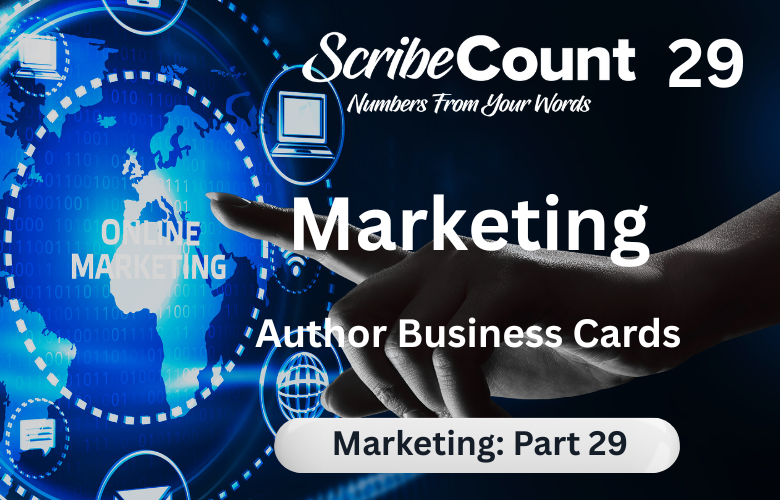Author Business Cards for Indie Writers: Crafting Your Real-World Introduction
An author business card is a small, tangible reflection of your professional identity. It delivers your brand, key contact information, and perhaps a glimpse into your writing genre—all in your reader’s pocket. Different from promotional bookmarks or book flyers, business cards are portable, practical, and designed for face-to-face networking. They introduce your author persona in bookstores, at readings, or during chance encounters—giving you a chance to convert casual conversation into an ongoing literary connection.
What Makes a Great Author Card?
A memorable business card harmonizes design and purpose. Ideally, its visual style mirrors your author logo and brand aesthetic, whether moody and mysterious for thrillers or bright and airy for romance. Clarity is essential: your name should stand out, along with your genre descriptor or tagline, contact details, and a web address or QR code linking to your author platform. Font choice matters—legibility trumps novelty. The cards should feel finely printed on quality stock, signaling that you take both your craft and reader relationships seriously.
Multiple Cards for Multiple Ventures
Some emerging indie authors wear two hats: creative author and small-press publisher. In such cases, a single card may not suffice. You might have one card promoting your fiction titles, featuring your author name and book website, and another professional card for your publishing company, listing your services and imprint details. Randall Wood, for instance, hands out author cards at conventions and reserved publishing cards during industry events. Tailoring your card’s design and content to the recipient—reader vs. bookstore professional—ensures the right message travels with each introduction.
Where to Place Your Logo and Contact Details
Logo placement on your business card should be strategic: usually at the top or side, balanced with your author name in a prominent position. After that, a concise genre line (for example, “Romantic Suspense Novels”) helps recipients connect your name with your work. Below these come your website URL, perhaps an email address, and a QR code for easy access to your “Books” page. Some authors include a Twitter or Instagram handle if those platforms are central to their presence. The layout should remain clean and uncluttered, reinforcing professionalism.
The Case for QR Codes
Adding a QR code turns your printed card into a digital gateway—no typing required. Scan the code, and readers land directly on a book trailer, backlist page, or your author newsletter signup form. It’s efficient, memorable, and aligns print with digital marketing strategies. Services like Vistaprint, MOO, and Canva support embedded and scannable QR creation, making distribution straightforward.
Materials, Finishes, and Features
A quality card feels substantial in hand. Standard cardstock works, but many indie authors opt for upgraded options—linens lending elegance, recycled stock projecting eco-conscious values, and matte or gloss coatings for refined presentation. Specialty finishes, like embossed foil or spot gloss, create textural accents. Rounded corners soften a card’s appearance, which can feel more tactile and less businesslike. Your choice should match your genre: historical fiction benefits from classic paper textures, while sci-fi titles pair well with sleek metallic finishes.
Where to Use Each Card
Business cards belong everywhere your shoes step. Author cards should accompany you to public events: library readings, book festivals, customers at bookstores, and writer meetups. The publishing imprint card fits better at press conferences, distribution meetings, or acquisitions panels. Stash a few cards in your tote, jacket pocket, and bookshelf. Anytime you hand someone a card, it offers them a way to remember and continue the conversation later.
How to Leverage Networking with Cards
The true value of a card is what happens after you hand it over. Use them as ice breakers: “I write psychological thrillers—would you like to keep in touch?” Dangle freebies tied to your site—an extra short story, an audiobook excerpt—accessible via QR. Email the same person within 24–48 hours, mentioning your conversation and reminding them of the download link they’ve received. This converts a fleeting meetup into future clicks and possible sales.
Creating Cards: Services You Can Use
DIY tools like Canva, Vistaprint, MOO, and GotPrint offer intuitive design templates for author cards. More advanced formatting (like pantone color matching or specialty finishes) may require working with designers on 99designs or Fiverr, who can deliver print-ready files. When selecting a supplier, order a small test batch first. Design a corner to fold over and test readability with the planned QR code before committing to a larger order.
First Impressions with Print and Digital Cards
As you hand out cards, people subconsciously evaluate quality and professionalism. A well-made card suggests you take your craft—and your readers—seriously. Conversely, flimsy stock, crooked design, or unreadable fonts scream amateur. A polished card, on the other hand, supports the perception that your writing—and your offer of a book—is worth investigating.
Electronic Business Cards (vCards)
In an increasingly digital world, electronic cards offer a modern complement to print. Tools like HiHello, Linktree, and Beacon allow you to generate digital cards with your photo, author name, website, social links, newsletter signup, and bio. These digital cards can be easily shared via smartphone during event meetups, linked in signatures, or embedded in ARCs. They reinforce your brand while remaining eco-friendly and flexible.
Concluding Thoughts: Why Cards Continue to Matter
Even with QR codes, ebook bundles, and digital promo, a business card remains the most human of marketing tools: tactile, personal, and immediate. It bridges your written world with everyday life—it’s the last thing readers touch as you shake their hand, the first reminder when their bookshelf grows dusty.
When thoughtfully designed and strategically used, author business cards invite new readers, reinforce your brand, and help indie writers stand tall in a crowded marketplace. Whether physically folded into a collector’s wallet or saved in their phone’s digital stack, your card can spark discovery and connection—one encounter at a time.

